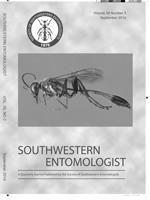To understand the relationship between pathogenicity and enzymatic activity of fungal isolates associated with Diaphorina citri Kuwayama, three isolates of Beauveria bassiana (Bals.) Vuill. and six of Hirsutella citriformis Speare from southeastern and Central Mexico were characterized enzymatically. Pathogenicity against D. citri was evaluated in four of them. They killed >90%, and no differences among isolates were found; however, by the change rate (rL) of the logistic model, a trend of more mortality (1.12) was confirmed in the Bb-Ch isolate of B. bassiana obtained from adult D. citri from Quintana Roo State, while the Y-2 isolate of H. citriformis from Yucatan State resulted in least mortality (0.74). Enzymatic production, both intra and inter-specific, varied, but greatest variability was found in proteases, and there were strains without proteolytic activity. A positive relationship (r = 0.84 to 0.98) was found only between intracellular proteases versus pathogenicity; isolates with more and least production were Bb-Ch (3.15) and Y-2 (0.12), respectively, suggesting this methodology for detecting enzymes might be useful in selecting the most pathogenic isolates. Based on pathogenicity and intracellular enzymatic activity, strains with the greatest potential for managing D. citri were Bb-Ch and Bb-Cat of B. bassiana. Based on enzymatic activity only, Y- 5 and Camp-1 could be the H. citriformis strains more pathogenic to D. citri.
How to translate text using browser tools
1 September 2014
Enzymatic Activity and Pathogenicity of Entomopathogenic Fungi from Central and Southeastern Mexico to Diaphorina citri (Hemiptera: Psyllidae)
Hipolito Cortez-Madrigal,
José Manuel Sánchez-Saavedra,
Gerardo Díaz-Godínez,
Gustavo Mora-Aguilera
ACCESS THE FULL ARTICLE

Southwestern Entomologist
Vol. 39 • No. 3
September 2014
Vol. 39 • No. 3
September 2014




